American Resources Is Thinking Out Of The Box To Find Success – Despite A Market That Dictates The Opposite For The Company’s Contemporaries.
By J. Weiss
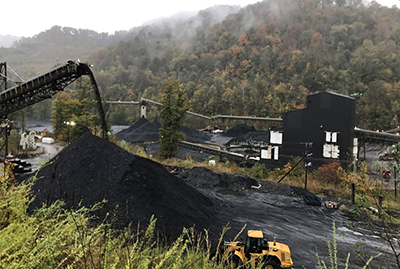 The writing appears to be on the wall: coal should be suffering. And, by some estimations, things are not going well, given the Energy Information Administration’s report that stockpiles were recently at their highest in some time, to market analysts reporting that some types or coal are currently worth more to hang on to than to import.
The writing appears to be on the wall: coal should be suffering. And, by some estimations, things are not going well, given the Energy Information Administration’s report that stockpiles were recently at their highest in some time, to market analysts reporting that some types or coal are currently worth more to hang on to than to import.
Even with some of the doom and gloom, the resilience and pride of the coal industry remains for many; after all, it will take much more than politics to dissuade a commodity that has two rings to the future in the form of clean coal technology and rare earths extraction.
There is an old adage that, to find the positive in what appears to be a negative situation, one should find the silver lining. Add making smart decisions to that, and building a strong, healthy portfolio from world-class assets, and you have a standout in today’s coal community: American Resources.
Enviable Portfolio
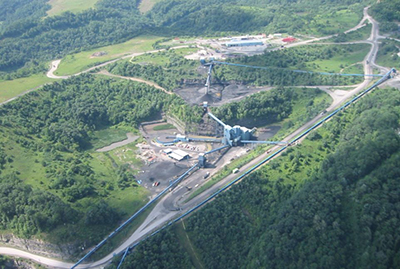 Based in Indiana, the operator – established in 2015 – has built an enviable portfolio that now includes five complexes across eastern Kentucky and southern West Virginia. They include the flagship Perry County Resources (PCR) mine, the McCoy-Elkhorn operation, Wyoming County Resources, Deane Mining and the Knott County complex.
Based in Indiana, the operator – established in 2015 – has built an enviable portfolio that now includes five complexes across eastern Kentucky and southern West Virginia. They include the flagship Perry County Resources (PCR) mine, the McCoy-Elkhorn operation, Wyoming County Resources, Deane Mining and the Knott County complex.
Some of them were under previous ownership; in fact, Knott County once was an Arch Coal asset and Deane Mining came to its ownership by way of a purchase from Rhino Resources. PCR has emerged as a flagship, and American Resources has approximately 40 mining permits that are nearly all adjacent to its processing and logistics complexes.
It is not lost on anyone at American Resources that its neighbor operators in the mining-rich regions in which it operates are working against a rough tide for coal. For the company, it comes down to how it has approached its goals.
“We are an agent to bring what we think is needed change to the industry,” according to Communications and Finance Vice President Mark LaVerghetta. The company’s formula for strength: containing costs, “stripping the fat,” and operating under strict business practices battened each of its complexes down to their simplest forms.
“To fit the modern day marketplace, we needed fresh eyes …[and are] now in a really good spot to flip the switch.”
Yes, flipping the switch is a literal notion at this time for the miner as it opted in the weeks just before COVID-19 stopped much of the nation’s businesses in their tracks to idle operations at all of its assets.
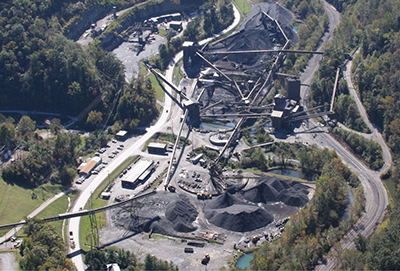 It is what it did during the idle period that the miner said might just be unprecedented in the coal industry. For one, it announced in June that it was spending its pandemic-related idle period to take on its environmental responsibilities by boosting its reclamation efforts and building on those it had on staff to perform the reclamation work.
It is what it did during the idle period that the miner said might just be unprecedented in the coal industry. For one, it announced in June that it was spending its pandemic-related idle period to take on its environmental responsibilities by boosting its reclamation efforts and building on those it had on staff to perform the reclamation work.
In that announcement, it confirmed a third reclamation crew, and said it would at the same time continue to evaluate its permits to identify properties which were “at or below … proprietary (economic and environmental) margin” and setting a schedule for final reclamation to be performed.
“Over the course of the last few months, American Resources has taken the opportunity to further streamline and optimize its operations to reduce its operating cost structure while accelerating its environmental reclamation efforts to reduce its holding costs,” officials said at the time, adding that such projects would be conducted at all of its thermal permit locations.
Through its multiple acquisitions, the company has acquired reclamation bonding for permits totaling more than $41 million, the company confirmed. As of the June announcement, work was complete or being completed at 25 sites.
Some of the work involved significant reclamation and remediation at the Gold Star thermal mine in Greene County, Ind., which had been idle since 2015. Another reclamation/remediation program included several sites and permits in eastern Kentucky.
American Resources chairman and CEO Mark Jensen said in June, “Enabled by our low corporate overhead and our dedication to not wasting valuable resources, we have chosen to focus on improving mine plans and advancing environmental reclamation during this market disruption, which we believe will drive significant long-term value for our shareholders as we look to be in position to ramp up production when the market stabilizes.”
One Example
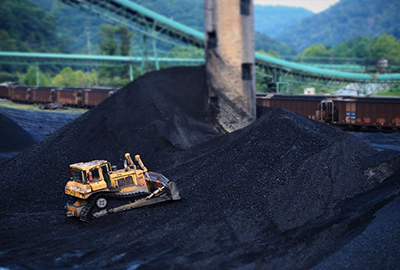 This was just one example of what LaVerghetta said made up a mission for the operator: to extract its efficiencies in order to set it up for the future – what he called the “long game” for the miner. Jensen said as much in June when he confirmed those plans: to cost-cut and right-size assets and ramp up its other operations as needed to complement market conditions for its domestic and international customers.
This was just one example of what LaVerghetta said made up a mission for the operator: to extract its efficiencies in order to set it up for the future – what he called the “long game” for the miner. Jensen said as much in June when he confirmed those plans: to cost-cut and right-size assets and ramp up its other operations as needed to complement market conditions for its domestic and international customers.
While the idea of survival may look different from one mine operator to the next, where goals lie near- and long-term is only half of it. It was the pathway it already laid in its journey to today that helped it along, a “playbook” of sorts according to the two officials, and looking “through a different lens.”
“We are confident in the actions we’ve taken and our strategic plan to build a platform that better fits today’s market. By acquiring a first-class set of assets at a substantial discount to replacement cost, and implementing changes that are focused on efficiency, low-cost and sustainability, we feel it better prepares us and puts us in a greater position to respond to the expected strong bounce in worldwide infrastructure demand in the latter part of this year and in 2021.”
While neither would verify an exact timeline, a schedule for reopening of the mine’s active operations has been decided and its PCR room and pillar operation will be the first to reopen its doors. That is, in part, because of an uptick in the pulverized coal injection (PCI) market, and as a result American Resources has eliminated between $40-45 million in annualized costs from the PCR complex in preparation to come back online.
LaVerghetta said it is looking forward to selling a quality product, particularly PCI, and even as some of its similarly producing neighbors continue to remain idle or have closed altogether.
“PCR is in a really good place,” he noted, adding that it should produce 500,000-750,000 tpy in 2021 – most likely in the midrange of around 600,000 tpy, as it ramps up to its target capacity of 1 million tpy by 2022.
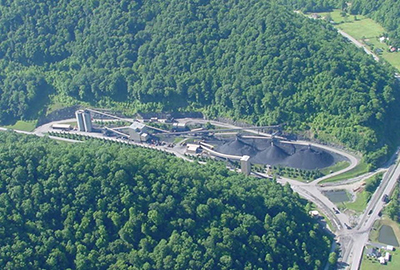 A Blueprint for U.S. Coal’s Future?
A Blueprint for U.S. Coal’s Future?
American Resources purchased Perry County Resources, located in Hazard County, Ky., in September 2019 from the bankruptcy of Cambrian Mining – one of a number of mining operators to fall into financial collapse over the year. It was not in a good place the day the miner took over ownership.
“The plant was in horrible shape, with less than 17% efficiency,” LaVerghetta said. “We have since invested significant time and money over the past year to bring the plant back to good operational capacity.”
The jewel of the complex, the E4-2 mine, was the focus of that work, and American Resources crews went to work on a complete overhaul and restructuring with a goal of reducing its active and idle mine footprint “while not impairing the ability to access the full boundary of the reserve for mining,” he pointed out.
“Due to the sheer size of the works being maintained, the costs of maintenance was outsized and impaired the mine’s ability to be profitable. We restructured the mine plan so that maintenance costs are drastically reduced and the mine will be profitable.”
Among American Resources’ achievements was the execution of a mine consolidation project to reallocate resources from two deep mines purchased into one, allowing it to amend the operating sections in the plan to support a similar output much more efficiently and more cost-effectively. The “new” PCR will now use supersections rather than single sections, doubling its output with only an incremental increase in labor.
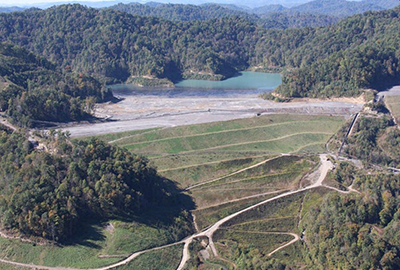 The company also evaluated the mine’s policies, contracts, leases and operations to restructure and significantly cut costs at the complex. The executives point out that the prior owner had two long-term leases in place that had cost the complex more than $80 million over two decades.
The company also evaluated the mine’s policies, contracts, leases and operations to restructure and significantly cut costs at the complex. The executives point out that the prior owner had two long-term leases in place that had cost the complex more than $80 million over two decades.
The second deep mine, which was idled, was deemed non-core and was divested, though the equipment was kept to support PCR. From that point, it moved forward to implementing repair and revised maintenance plans for both the underground and processing equipment areas to significantly increase efficiency and productivity.
PCR, the history of which goes back to the 1960s, is getting a makeover at the perfect time, as it still has much of its life in front of it – an estimated 38.8 million tons of recoverable reserves, to be exact. Jensen and LaVergetta project the mine will be a part of the American coal scene for at least another 35 years.
When the room and pillar mine finally gets to begin operations in the fourth quarter (it was still pending at press time), it will carry three shifts a day (one for maintenance) with 116 workers that will later grow to a payroll of 175. A fleet of both Joy and Caterpillar continuous miners will take on the bulk of that labor.
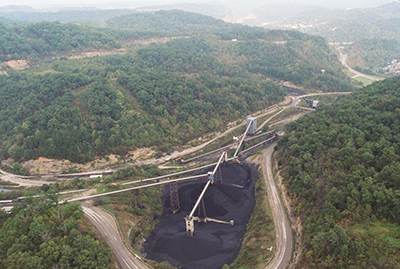 It will extract from the Elkhorn 4 seam, which has a seam height of 35 to 45 in. and a cutting height of about 60 in. Tonnage will be sent to the 1,300-tph Davidson Branch preparation plant, then sent mostly by rail to its domestic steel producing customers.
It will extract from the Elkhorn 4 seam, which has a seam height of 35 to 45 in. and a cutting height of about 60 in. Tonnage will be sent to the 1,300-tph Davidson Branch preparation plant, then sent mostly by rail to its domestic steel producing customers.
That customer base will likely be welcoming it, as the product from PCR will be a sought-after PCI that is low-sulfur and high quality.
In August, American Resources signed a third-party processing agreement for services at Davidson Branch. While the partner was not named, American Resources will provide processing, storage and loading services for the third-party. The agreement enables the company to leverage the carbon processing at the PCR complex to further reduce its cost structure. After an initial trial period, the deal will carry a one-year term with an option to renew annually.
“We have invested significant time and money to restructure the PCR complex to what we believe is one of the lowest-cost and most efficient PCI/soft coking carbon complexes in the United States,” LaVergetta said. “Our long-term plan is to operate it as such and provide our customers with a high quality and stable product source.”
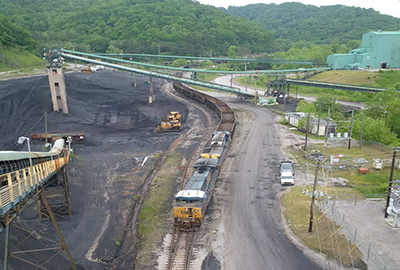 With minimal gas issues, and full recovery of its mineable and merchantable coal anticipated for the mine, the path should be clear as it targets the steel, infrastructure, and industrial stoker markets.
With minimal gas issues, and full recovery of its mineable and merchantable coal anticipated for the mine, the path should be clear as it targets the steel, infrastructure, and industrial stoker markets.
“We remain fully confident in the changes we brought to PCR and are bringing to the industry as a whole,” Jensen said.
LaVergetta agreed. “It’s a new paradigm,” he said.
“We are extremely proud of our team of hard-working individuals that are embracing the restructuring efforts to unveil the potential at Perry County.”
J. Weiss is a technical writer and editor covering the eastern United States.
Recycling and Responsibility
In September, American Resources announced it had kicked off a service partnership for recycling its railcars and metal.
In conjunction with a third-party metal aggregating and processing company, American Resources – through wholly owned subsidiary American Metals – began receiving and processing retired coal railcars, which will be recycled for their metal content and reused for alternative modern-day purposes.
American Metals’ role in the pact will be to allocate and process the decommissioned railcars. To start, the operator is using some areas of its Indiana property, including a rail spur for storing and staging areas for the railcars to be processed and ultimately transported to be recycled.
That property, a decommissioned thermal coal mine in Greene County, is currently being completely environmentally reclaimed and remediated. While it once was a baseload supplier of thermal coal for a regional utility, it later became unviable.
“Given its centralized location among various coal fields and regional steel mills, it has proven to be ideal for an aggregation and processing location for the railcars to be recycled and reused in the steel markets, Jensen said.
“Our innovation provides us with various ways of maximizing the value of our assets, and our goal of broadening the raw material products we can offer our valued customer base. By leveraging our American Metals subsidiary and continuing to buildout our business lines in forward-looking industries that supply the infrastructure market, we believe we have the ability to not only expand our revenue but also create further diversification for our shareholders.”
